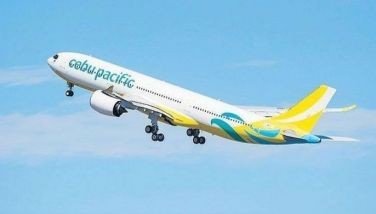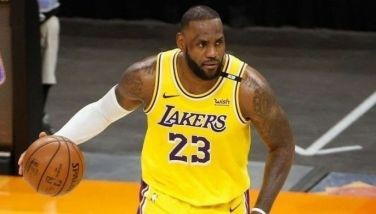Government, cellphone firms agree to block stolen units
February 6, 2002 | 12:00am
In a bid to arrest the rising incidence of cellular phone theft, government together with the mobile phone service providers have agreed to render useless any GSM handset, whether prepaid or postpaid, that is reported stolen or lost.
No other country is said to have resorted to blocking of what is known as international mobile equipment identification number (IMEIs) to prevent mobile phone theft. Instances of blocking in other countries cover only defective units.
The National Telecommunications Commission and the four licensed cellular mobile telephone service (CMTS) providers – namely Globe Telecom, Smart Communications, Pilipino Telephone Inc. and Isla Communications – announced yesterday that the IMEI or serial number of a prepaid handset that is reported stolen will be blocked.
A similar agreement was entered into earlier in the case of postpaid handsets, although yesterday’s accord is expected to have a bigger impact since more than 90 percent of all cellular phones are prepaid. Another memorandum of understanding will soon be signed between the NTC and the Philippine National Police to arrest the growth of a new ‘cottage’ industry.
The CMTS carriers will undertake the blocking upon orders from the NTC which will require the submission by the prepaid subscriber of an affidavit of ownership and loss; a disclaimer freeing NTC and the carriers from any responsibility for whatever claims, losses, or damages any party may institute by reason of NTC’s action to order the permanent blocking of the handset from usage; valid identification card; and police report.
According to Smart Communications, by deactivating lost and stolen GMS phones, this initiative will not only halt the growing illegal trade of such handsets, but will also hopefully reduce the incidence of cell phone snatching that has resulted not only in altercations but the loss of innocent lives as well.
NTC Commissioner Eliseo Rio said that upon submission of these requirements, the agency can order the carriers within 24 hours to block the IMEI. A simultaneous blocking will be made so that the phone is blocked regardless of which carrier provides the service, which means that a Globe phone whose IMEI is blocked for instance, cannot go to Smart to have it reactivated and vice-versa. A subscriber may also request the blocking of the SIM.
In case the phone is recovered, the subscriber who requested for the blocking has again to show proof of ownership so that the IMEI can be unblocked. Subscribers can find their IMEI numbers at the back of their units or in the packaging.
Subscribers can go to any of the NTC one stop public assistance centers (OSPAC) to file their complaints. The forms are available at the OSPAC or can be downloaded from NTC’s website at www.ntc.gov.ph.
Rio admits that the new system may encounter problems, such as certain people asking to block the IMEI of someone else’s phone for petty reasons, but he emphasizes that the advantages outnumber the disadvantages. The new system will also apply to new and prospective CMTS licenses such as Digital Telecommunications, whose cellular business is expected to be ready by the second quarter of the year, and Bayan Telecommunications, which according to the Supreme Court no longer has any legal impediment to use its CMTS license.
The NTC chief said that in cooperation with the cellular phone makers such as Nokia, Ericsson, to name a few, the blocked phones will also be considered blocked in other countries, to avoid the possibility of these phones being re-exported.
Unlike postpaid subscriptions wherein a subscriber is registered with a particular carrier, prepaid phones are bought off the shelf, and therefore, carriers have no record as to who actually owns a prepaid phone.
It took a long time before government and the carriers could agree on a scheme to block prepaid cellular phones because of the absence of a proof of ownership. Rio said there were plans before to campaign for the voluntary registration of all prepaid phones numbering to around 10 million units, but he admits that the administrative cost of registration is high.
"But we needed to act now, so we agreed that an affidavit of ownership will suffice," he said.
Several months after the NTC announced the possible blocking of the IMEI of postpaid cellular phones, the agency has only recommended the blocking of 16 units to the carriers. Rio explains that possible reasons for the low response in the case of postpaid is the lack of an information drive as well as the fact that those who own postpaid units usually belong to the A-B economic strata who do not take public utility vehicles and most likely just misplaced their phones. — Mary Ann Reyes
No other country is said to have resorted to blocking of what is known as international mobile equipment identification number (IMEIs) to prevent mobile phone theft. Instances of blocking in other countries cover only defective units.
The National Telecommunications Commission and the four licensed cellular mobile telephone service (CMTS) providers – namely Globe Telecom, Smart Communications, Pilipino Telephone Inc. and Isla Communications – announced yesterday that the IMEI or serial number of a prepaid handset that is reported stolen will be blocked.
A similar agreement was entered into earlier in the case of postpaid handsets, although yesterday’s accord is expected to have a bigger impact since more than 90 percent of all cellular phones are prepaid. Another memorandum of understanding will soon be signed between the NTC and the Philippine National Police to arrest the growth of a new ‘cottage’ industry.
The CMTS carriers will undertake the blocking upon orders from the NTC which will require the submission by the prepaid subscriber of an affidavit of ownership and loss; a disclaimer freeing NTC and the carriers from any responsibility for whatever claims, losses, or damages any party may institute by reason of NTC’s action to order the permanent blocking of the handset from usage; valid identification card; and police report.
According to Smart Communications, by deactivating lost and stolen GMS phones, this initiative will not only halt the growing illegal trade of such handsets, but will also hopefully reduce the incidence of cell phone snatching that has resulted not only in altercations but the loss of innocent lives as well.
NTC Commissioner Eliseo Rio said that upon submission of these requirements, the agency can order the carriers within 24 hours to block the IMEI. A simultaneous blocking will be made so that the phone is blocked regardless of which carrier provides the service, which means that a Globe phone whose IMEI is blocked for instance, cannot go to Smart to have it reactivated and vice-versa. A subscriber may also request the blocking of the SIM.
In case the phone is recovered, the subscriber who requested for the blocking has again to show proof of ownership so that the IMEI can be unblocked. Subscribers can find their IMEI numbers at the back of their units or in the packaging.
Subscribers can go to any of the NTC one stop public assistance centers (OSPAC) to file their complaints. The forms are available at the OSPAC or can be downloaded from NTC’s website at www.ntc.gov.ph.
Rio admits that the new system may encounter problems, such as certain people asking to block the IMEI of someone else’s phone for petty reasons, but he emphasizes that the advantages outnumber the disadvantages. The new system will also apply to new and prospective CMTS licenses such as Digital Telecommunications, whose cellular business is expected to be ready by the second quarter of the year, and Bayan Telecommunications, which according to the Supreme Court no longer has any legal impediment to use its CMTS license.
The NTC chief said that in cooperation with the cellular phone makers such as Nokia, Ericsson, to name a few, the blocked phones will also be considered blocked in other countries, to avoid the possibility of these phones being re-exported.
Unlike postpaid subscriptions wherein a subscriber is registered with a particular carrier, prepaid phones are bought off the shelf, and therefore, carriers have no record as to who actually owns a prepaid phone.
It took a long time before government and the carriers could agree on a scheme to block prepaid cellular phones because of the absence of a proof of ownership. Rio said there were plans before to campaign for the voluntary registration of all prepaid phones numbering to around 10 million units, but he admits that the administrative cost of registration is high.
"But we needed to act now, so we agreed that an affidavit of ownership will suffice," he said.
Several months after the NTC announced the possible blocking of the IMEI of postpaid cellular phones, the agency has only recommended the blocking of 16 units to the carriers. Rio explains that possible reasons for the low response in the case of postpaid is the lack of an information drive as well as the fact that those who own postpaid units usually belong to the A-B economic strata who do not take public utility vehicles and most likely just misplaced their phones. — Mary Ann Reyes
BrandSpace Articles
<
>
- Latest
- Trending
Trending
Latest
Trending
Latest
Recommended






























